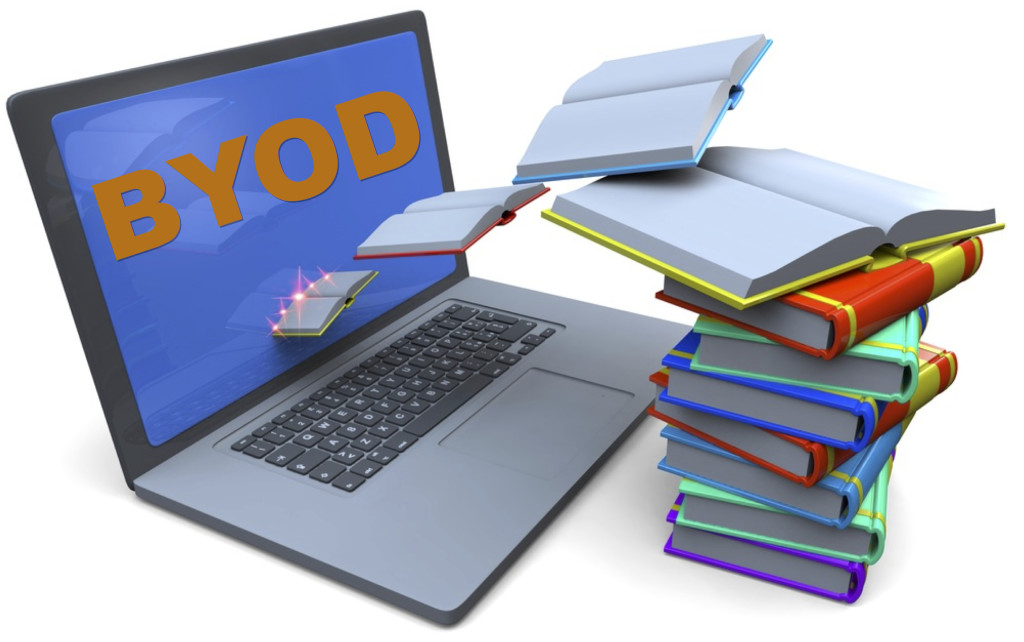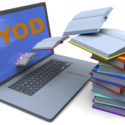
With the end of the year 9 government laptop program last year, Australian high schools are having to implement new computer programs this year, to provide students with portable computers. Most schools are opting for a Bring Your Own Device (BYOD) scheme, where students are expected to buy their own computer to bring to school. Schools are either specifying which devices are suitable, Windows, Mac, Tablets, or leaving it up to parents to decide. Some schools are still waiting to hear about government funding in regard to I.T support or the devices themselves, before making a decision.
BYOD means that it is now up to schools and parents to ensure that the devices brought to school are secure and suitable. Teachers want your children to be able to concentrate at school without distractions of gaming or social media. School Wi Fi will still be restricted, but devices won’t be, unless restrictions are implemented by the school or by parents.
Some parents are having to make decisions around BYOD for primary school students also.
Our older son, now 17, received a government issued laptop in year 9 in 2012 which he still uses for school. It is a IBM Lenovo, you can’t add programs to it, or access its settings for security reasons. My son only uses the Lenovo for school work, or for creative writing.
Our family just purchased for my younger son, going into year 9, his first school laptop for the BYOD program for 2014. We were given a choice as to what type of device we bought for him.
With all of this in mind I thought I’d use our family as a bit of a test case, to help parents make decisions on how to prepare for their year 9 student having their own laptop this year.
Giving a 14 year old student their own laptop, some for the first time, can present a few problems.
1. An expensive device to protect from theft, damage and loss
2. Compatibility with school software and text books
3. Increased use of a portable computing device
4. Computer/Internet supervision issues
The recommendations from my sons schools for a BYOD device were.
1. i5 processor Min
2. Min 128G hard drive
3. Portability
4. Windows, Mac, Chrome book, Tablet, either iPad or Windows Surface
We decided on a MacBook Air
13-inch : 128GB
Specifications
- 1.3GHz dual-core Intel Core i5 processor
- Turbo Boost up to 2.6GHz
- Intel HD Graphics 5000
- 4GB memory
- 128GB flash storage1
The reasons we bought this Mac were:
1. Portability, weight, one of the lightest. 1.35Kilos
2. 13″ Screen Large enough to support most apps, PDF’s etc
3. Adequate hard drive size for software and files
4. Long battery life
5. Potential for more iBook text books in the future
6. Good size usable Keyboard
7. Compatibility with Adobe products (an offer from the school)
What Steps Have We Taken To Protect The Device?
1. A light but sturdy laptop bag, that can also fit inside his school bag
2. A protective shell/case to clip on to the laptop
3. Antivirus program (Sophos Free for Mac)
4. Enabled regular backups (via Time Capsule via Wi Fi)
Parental Controls
We decided to set up 3 logins to access the device.
One for parental admin, one for leisure activities (full admin) and one for school work only (parental controlled)
We implemented a “Trust First” arrangement with our son. This included:
1. Full access to both the leisure log in and the school work log in
2. Laptop can be in the bedroom for school work only during school days
3. Leisure activities (gaming) can only occur on his laptop during our already established time table and preferably in family room
4. School apps only on the school work log in
Three separate login’s means that our son can concentrate more fully on school work. We have full access to his laptop through the admin log in if we need to monitor or change the set up. If we find that my son is gaming in his room, or breaking any of our other agreements, we can change the leisure log in password so that it is locked, and then only enabled by us when suitable.
We can also delete the “leisure log in” later if it becomes too tempting and a distraction for our son. Our son has admin privileges on his leisure side but not on his school work side. This means we can, if needed, monitor the programs he has on his school work side, and he can isolate the games and social media from the school side. This might become an issue for school if he needs to download extra programs, but we will cross that bridge when we come to it.
We realize that switching between the leisure and school log in’s is easy, but we are implementing a “Trust First” program. We wanted to give our son, an opportunity to self moderate, and live up to our trust. He is 14 now, and has so far been exceptionally trustworthy on computers. Our main concern was that he doesn’t play games or use unsuitable apps in his room away from our supervision, or get distracted when doing school work.
His main P.C Windows computer at home is more of a gaming device, it is a high end desktop computer in the family room. It was one reason we decided to buy a light weight device, to be more of a portable device that won’t be preferred for gaming.
We will be supervising our son’s use of his new computer and monitoring how the “Trust First” agreement works, until such time as he is old enough to be left on his own. With both my boys I discourage them from spending all their spare time in their rooms, we like them to spend their leisure time in a variety of ways that includes computer time, sport, outdoor activities and face to face time with friends and family. We have set up the computers in our home to encourage discussion about how they use their computers, and for us to be able to supervise them easily without “spying”. Using their devices for creative pursuits sees them using them for photo and film editing, 3D modelling, music producing, drawing with a Wacom Bamboo pad, building flash games, creative writing as well as gaming and video watching. It’s so important to parents to understand what computers can do for creativity, socialising, playing and school, so that your children can use time on computers with balance and variety.
The open conversations and my sons willingness to come to us with any issues they have online and off, helps keep us up to date with what they are using.
What Are Your Children Going To Use?
Decisions about which devices parents buy for school BYOD programs, and how parents manage these new portable devices at home, depends very much on your family philosophy around computers and mobile devices and how your children respond to self moderation and family boundaries.
As we progress through the year at school, it will be interesting to see how this works, and I will update this post with what we discover.
What devices do your children’s have for school this year? What decisions have you made?
Update 20/1/14
After having some more software installed on my son’s Mac for school we have decided to disable the Parental Controls on his School side log-in. The parental controls simply won’t work for a 14yr old boy at school. Even creating a folder requires you to put in an Admin password. So the result is that his Gaming side is still an “admin” log in, and his school work side is now just a “standard” login which means some adjustments will require an admin to give permission. This also means that if he downloads Minecraft on his Gaming side, it doesn’t show up on his Standard School work side. My son’s admin password for his Gaming account will unlock any restrictions he might come across on his school login, with creating new folders or putting something in the trash, which requires an admin password on a standard Login. And that’s all ok at the moment with the “Trust First” plan. My main objective is to keep the logins quite distinctively separate to help him divide his leisure activities on his computer from his school work. If you want to follow this post, just put a comment below and be sure you subscribe to new comments on this post. I’ll put a comment on the post from time to time with updates to this adventure!
Update 13/02/2014
After 2 weeks at school all is going well. The system is working for our son. I did a spot check on his laptop, to check history and the apps he was using and so far so good. No problems at school with the set up and the laptop is being well used. He uses the text books on the school side as well as some hard copy text books.


[…] Preparing For BYOD In Australian Schools 2014 […]
Good post
[…] ‘Preparing for BYOD In Australian Schools 2014′, Leonie Smith, The Cyber Safety Lady, 9/1/14, viewed 23/2/15 […]